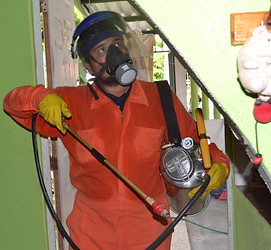

OUR RESEARCH
OVERVIEW
Vector-borne and parasitic diseases are of historic and recent public health concern. The strong, complex relationship between humans, vectors, and pathogens requires an interdisciplinary approach to understand the broad contextual factors involved in disease transmission. At the Prokopec Lab, we believe that an eco-epidemiological approach, including experimentation and careful consideration of biological processes, is needed to recognize the multi-level causation of arboviral diseases and properly create disease prevention strategies.
Research at the Prokopec Lab lies at the interface between environmental science and public health. Our primary research areas include disease ecology, spatial and landscape epidemiology, and global health. We emphasize the ecological and evolutionary mechanisms that give rise to the spatial and temporal dynamics of disease emergence among populations and species. Most importantly, we are interested in applying this knowledge to creating evidence-based public health interventions and contributing to community outreach.
We currently have a broad range of research interests that span fields of study and international borders. Please click below for more information about our ongoing research projects or view our interactive map to see our international study sites!
RESEARCH AREAS
TARGETED INDOOR RESIDUAL SPRAYING (TIRS)
Mosquitoes spend the majority of their time resting on surfaces referred to as resting sites. These surfaces are targeted as areas with a high degree of contact with targeted mosquitoes and act as conduits for delivering residual insecticides. Targeted Indoor Residual Spraying (TIRS) refers to the selective application of residuals insecticides on indoor Aedes aegypti resting locations. This project will evaluate the epidemiological impact of TIRS on Aedes-borne diseases, such as dengue, Chikungunya, and Zika, using clustered randomized controlled trials.

TRANSMISSION HETEROGENEITY
Over a decade of research on the role of heterogeneity (individual, spatial, temporal) on arbovirus transmission dynamics has unveiled the critical role of specific traits on pathogen transmission. We have developed a novel framework to study the overlapping nature of couplings between functional heterogeneities relevant for vector-borne disease transmission. We argue that research efforts should move beyond considering the impact of single sources of heterogeneity and account for complex couplings between conditions with potential synergistic impacts on parasite transmission. Using theoretical approaches and empirical evidence from various host–parasite systems, we investigate the ecological and epidemiological significance of couplings between heterogeneities and discuss their potential role in transmission dynamics and the impact of control.

RESEARCH AREAS

TARGETED INDOOR RESIDUAL SPRAYING (TIRS)
Mosquitoes spend the majority of their time resting on surfaces referred to as resting sites. These surfaces are targeted as areas with a high degree of contact with targeted mosquitoes and act as conduits for delivering residual insecticides. Targeted Indoor Residual Spraying (TIRS) refers to the selective application of residual insecticides on indoor Aedes aegypti resting locations. This project will evaluate the epidemiological impact of TIRS on Aedes-borne diseases, such as dengue, Chikungunya, and Zika, using clustered randomized controlled trials.

TRANSMISSION HETEROGENEITY
Over a decade of research on the role of heterogeneity (individual, spatial, temporal) on arbovirus transmission dynamics has unveiled the critical role of specific traits on pathogen transmission. We have developed a novel framework to study the overlapping nature of couplings between functional heterogeneities relevant to vector-borne disease transmission. We argue that research efforts should move beyond considering the impact of single sources of heterogeneity and account for complex couplings between conditions with potential synergistic impacts on parasite transmission. Using theoretical approaches and empirical evidence from various host-parasite systems, we investigate the ecological and epidemiological significance of couplings between heterogeneities and discuss their potential role in transmission dynamics and the impact of control.

INSECTICIDE RESISTANCE
As insecticide-based interventions are deployed, there is a need to understand how evolutionary processes impact the success of such efforts. Insecticide resistance has emerged as a major problem to public health, and there is a need to understand the ecological determinants of the emergence and propagation of genes that confer resistance to a myriad of insecticide classes. We aim to understand the spatial and temporal dynamics of insecticide resistance as they relate to vector management
regimes.

VECTOR CONTROL
Using an evidence-based approach, we conduct experimental and randomized field trials to evaluate the impact of existing and novel interventions on vector behavior and abundance or pathogen transmission. Such analyses depend on adequate surveillance platforms, and we are involved in the development of better sampling methodologies, the incorporation of spatial analysis and mapping, and the evaluation of this enhanced surveillance in the context of urban mosquito control programs.

EMERGING TICK-BORNE DISEASES
Ticks are the most notorious vectors of human and animal diseases in the United States. In recent years, a new arbovirus, Heartland virus (HRTV), has been reported in the Midwestern and Southern US states, causing severe human disease and fatal cases. Knowledge about the viral enzootic cycle is very limited. The Prokopec Lab is currently studying the ecology of HRTV transmission in Georgia via field surveys of ticks and small mammals.
